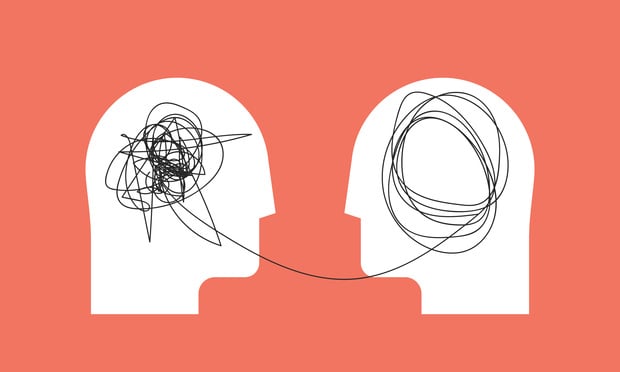The Importance Of Communicating Mental Health Benefits In The Workplace
 (Source: Paul Kraft/Shutterstock.com)
(Source: Paul Kraft/Shutterstock.com)
In the United States, nearly one in five adults suffers from a mental illness. But less than half, about 46.2%, receive mental health services such as treatment, counseling and medication, according to the National Institute of Mental Health. With workplace anxiety and stress on the rise in the age of “keep quiet,” employers benefit from offering comprehensive mental health benefits to their employees.
According to a survey by the American Psychological Association (APA), employees cite factors such as flexible working hours (41% of workers), a work culture that takes time off (34%), the possibility of working remotely (33%), and a four-day work week (31%) has a positive effect on their overall mental health. Further, while 30% of workers strongly agree that employer support for mental health should be included in their future hiring decisions, the APA found that less than a third (30%) said your employer currently offers health insurance that covers mental health issues. and substance use disorders. However, many employees may not be aware that their plans include mental health benefits. But of those who said their employer provides such insurance, 93% say such insurance is effective mental health support.
So what can employers do to make employees feel like their mental health and well-being matter?
Employers should inform and educate employees about the mental health benefits available and how to use them effectively. Employers who take the time to educate their employees will find a happier, stronger and more productive workforce with an overall improved company culture.
Tell us about your mental health offerings and any changes in 2023.
Mental health benefits are now a hire-and-keep board game, which means employers who don't focus on these benefits will have a harder time attracting and retaining employees. Mental health benefits can be a big difference. According to an APA survey, 81% of people say they will look for mental health support jobs when looking for future employment opportunities. Openly promoting benefit offers can also reduce the stigma surrounding their use and give employees an opportunity to ask questions. Employers who communicate these offers and embed them into the corporate culture make their employees feel supported and engaged.
Employee assistance programs (EAPs) are a great way for employees to get help with personal or work-related issues that can affect productivity, health, and mental and emotional well-being. WHP is free for employees and provides confidential assessments, short-term counseling, referrals and follow-up services. These programs can also go beyond counseling and include addiction support, financial planning, and legal services, all of which contribute to an employee's overall well-being. Employers should also remind their employees that HIPAA compliance also applies to mental health and that anything discussed with an advisor, even work-related, is confidential.
If benefits change, employers must notify employees immediately so they can use all benefits. For example, if the EHP now includes additional free tours, or if employers offer subscriptions to popular online services like BetterHelp or Headspace, or if employees can start working flexible hours or working from home, employees must inform them immediately and remind them regularly. - of these improvements. As employees continue to seek mental health care, employers should communicate any changes and direct employees to new products or services.
Train employees to use their mental health benefits effectively
Providing mental health benefits is not enough. To promote engagement, employers should also educate employees on how to use it effectively. New users may not know where to start and be concerned about cost. If you do your best to take advantage of these benefits, employees will feel more valued, and research shows that many need help.
According to Optavise research, 22% of employees want to know how to choose where to get health care and 33% want to know how their deductible, co-pay/coinsurance and maximum life insurance work and what it means for their wallet. . . Allowing employees to better navigate their benefits will help them feel more confident about choosing the right mental health care providers and treatment options.
Employees should also feel comfortable asking questions about how best to choose an intranet provider and use WHP or other resource offerings. By opening this channel of communication with employees and teaching them how to use their mental health benefits effectively, employees will feel more valued as their overall health and financial well-being is taken into consideration.
Third-party services such as brokers and legal services may also be used to help employees navigate their benefits and answer any questions about their health insurance plan and mental health offerings. Giving employees the option to speak to a neutral third party can encourage them to ask questions about the help and support they need.
On topic: two-thirds of employers plan to make mental health their top concern, survey finds
By providing appropriate education about their mental health benefits and encouraging open conversations about how to use them effectively, employees will feel more empowered to take care of their mental health in 2023. Workplace Culture, Recruitment and loyalty. The link between employee well-being and productivity is undeniable, making mental health benefits an invaluable addition to any benefits package.
Kim Bucky, Vice President of Customer Service at Optavise (formerly DirectPath)


Tidak ada komentar untuk "The Importance Of Communicating Mental Health Benefits In The Workplace"
Posting Komentar